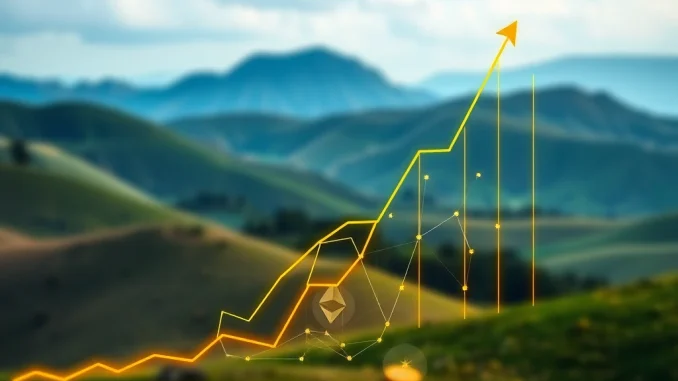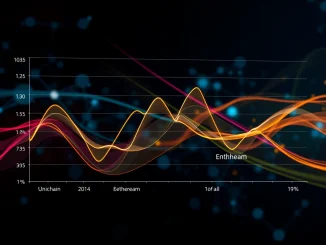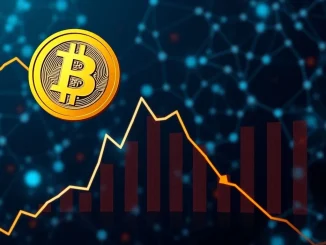
Crypto enthusiasts and investors are keeping a close eye on key metrics that signal the health and growth of blockchain networks. Recently, a significant development caught the attention of the market: a notable surge in Ethereum active addresses. This metric, often seen as a pulse check for network engagement, saw a substantial jump over a short period, sparking discussions about what it could mean for the second-largest cryptocurrency.
What is Driving the Surge in ETH Network Activity?
According to data highlighted by CryptoQuant analyst Carmelo Alemán, the number of active addresses on the Ethereum network experienced a significant increase. Between April 20 and April 22, active addresses rose from 306,211 to 336,366. This represents a 9.85% jump in just 48 hours. This kind of rapid increase in active participants is often interpreted as a positive sign, suggesting growing interest and usage of the network.
Active addresses are unique wallet addresses that participated in a transaction (either sending or receiving Ether or tokens) on a given day. A rise indicates more individual participants are interacting with the network. This could be due to various factors:
- Increased trading activity on decentralized exchanges (DEXs).
- More engagement with decentralized finance (DeFi) protocols.
- New users entering the ecosystem.
- Increased participation in NFT markets.
- Activity related to specific dApp launches or events.
The timing of this surge coincided with a period of ETH price rise, which is not uncommon. As price momentum builds, it often attracts more users and traders to the network, increasing activity. Conversely, increased activity can sometimes precede or reinforce price movements by demonstrating underlying demand and utility.
Putting CryptoQuant Data into Perspective
While the surge in Ethereum active addresses is a compelling data point, analysts emphasize the importance of looking at the broader picture. Carmelo Alemán’s analysis using CryptoQuant data provides a snapshot, but a comprehensive understanding requires examining other key metrics simultaneously. These include:
- Transaction Count: The total number of transactions processed. A rise in active addresses should ideally be accompanied by a rise in transaction count, indicating not just more users, but more *actions* being taken.
- Gas Fees: The cost of performing transactions on the network. Higher activity often leads to increased demand for block space, pushing gas fees up. Monitoring gas fees can provide insight into network congestion and the intensity of activity.
- Layer-2 Activity: A significant portion of Ethereum’s activity has migrated to Layer-2 scaling solutions like Optimism, Arbitrum, zkSync, and Polygon. A complete view of network usage must include activity on these interconnected networks, as they offload transactions from the mainnet.
Analyzing these metrics together helps differentiate between a genuine increase in organic usage and other potential factors, such as speculative trading bursts or even bot activity. A healthy network typically shows growth across multiple indicators.
What Does This Ethereum Surge Mean for the Future?
A nearly 10% jump in active addresses in just two days is a notable event for a network the size of Ethereum. It suggests renewed interest and engagement. While it’s crucial not to overstate the impact of a single metric, especially over a short timeframe, it contributes to the overall narrative surrounding Ethereum’s health and potential trajectory.
The continued development of the network, including upgrades and the expansion of the Layer-2 ecosystem, aims to make Ethereum more scalable and accessible, potentially attracting even more users and driving further ETH network activity. The interplay between network usage, developer activity, and market sentiment will continue to shape Ethereum’s path forward.
In conclusion, the recent surge in Ethereum active addresses is a positive signal, indicating growing engagement with the network. However, as highlighted by analysts using CryptoQuant data, it’s just one piece of the puzzle. A holistic view incorporating transaction counts, gas fees, and Layer-2 activity provides a more complete picture of Ethereum’s current state and future potential following this latest Ethereum surge.



